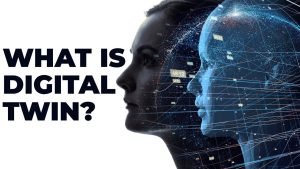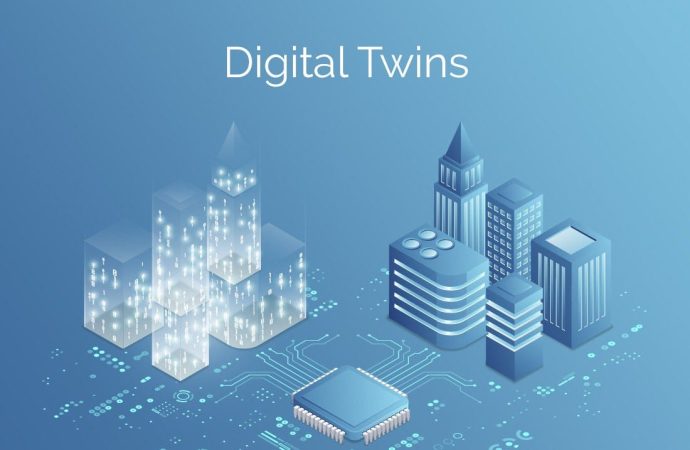Introduction Picture this: you are planning a dream vacation to a far-off beach or a historic city. You can read blogs, view photos, or watch videos, but you still wonder if the online visuals match reality. Now, imagine having a virtual Travel Experience that shows you accurate details of your lodging, the neighborhood layout, and
Introduction
Picture this: you are planning a dream vacation to a far-off beach or a historic city. You can read blogs, view photos, or watch videos, but you still wonder if the online visuals match reality. Now, imagine having a virtual Travel Experience that shows you accurate details of your lodging, the neighborhood layout, and nearby attractions, all before you step on a plane. It sounds futuristic, but this concept is already here.
Welcome to the world of digital twins in travel. This technology creates digital copies of real-world locations, offering an interactive way to see and explore your future destination. You can walk through hotel lobbies, check the view from a balcony, or explore a city’s landmarks through realistic simulations. This approach helps travelers make decisions with less guesswork and more confidence.
In this article, we will dive into what digital twins mean for the travel industry. We will see how they are created, why they matter, and how they let you preview your vacation like never before. We will also look at how destinations stand to gain and what the future might hold for these realistic virtual representations. By the end, you will have a clear idea of how digital twins can change your next trip and enhance your planning experience.
What Are Digital Twins?

Image by: Yandex.com
A digital twin is a virtual model that mirrors a real-world entity or system in real time or close to it. These models replicate the structure and context of the real place, often down to fine details. In manufacturing, digital twins track equipment performance or building layouts. In the world of travel, they duplicate entire cities, resorts, cruise ships, or theme parks.
What separates a digital twin from a standard 3D model is how the twin updates based on real-time or recent data. Sensors, cameras, and geographic information systems feed data into the virtual copy. This means the digital twin is not just static. It may show current weather, changes in landscaping, or even daily foot traffic. In travel planning, that level of accuracy can help travelers decide if a location meets their needs. You can see if a vacation rental truly has the roomy balcony it advertises, or if the public spaces in a resort have enough shade for a hot afternoon.
Creating a digital twin usually involves mapping technology, such as drones, LiDAR scanning, or advanced 3D rendering. This data merges to form a highly detailed environment that feels lifelike. These digital environments can be explored on a computer, smartphone, or using virtual reality headsets. The result is a more engaging, immersive experience than simple photos or 2D videos.
The Role of Digital Twins in Travel

Image by: Yandex.com
Digital twins in travel fill a gap in how travelers research and plan. Reading reviews or scrolling through images offers limited insight. By contrast, a 3D travel preview can show exact room dimensions, local weather patterns, or how busy a street is at different times. That gives travelers a better sense of what to expect, reducing the uncertainty that often comes with booking a new destination.
Hotels and tourist boards also benefit from these lifelike models. They can showcase amenities more transparently, building trust with customers. If a resort includes a scenic poolside bar, a digital twin can allow potential guests to walk around virtually, see seating arrangements, and imagine themselves relaxing there. This approach helps properties highlight unique features that might go unnoticed in standard pictures.
Likewise, travelers can explore local attractions in a meaningful way. The technology may highlight walking paths or suggest lesser-known spots for photography. In places where environmental factors matter, such as hillside resorts or beachside properties, real-time simulation can show tide conditions or seasonal changes. This detail helps visitors pack smartly and schedule activities based on accurate forecasts. Beyond comfort and planning benefits, digital twins can improve safety by letting people study terrain or roads before they arrive.
Real-World Examples of Digital Twins in Travel

Image by: Yandex.com
Imagine a city that draws large numbers of tourists each year. City officials, hotels, and local businesses band together to build a digital twin of the historic center. This model features landmarks, major museums, and restaurant-filled streets. A potential traveler can explore these streets virtually, checking how far certain hotels are from the main attractions or how crowded an area can get during peak hours.
Another example might be a cruise ship company. To boost bookings, they create a digital twin of their flagship vessel. Through your tablet or a VR headset, you can roam the deck, peek into different cabin classes, and see the spa layout. If you have accessibility needs, you can view the paths to public areas or see if the corridors meet your requirements. This level of detail can remove doubts that might hold someone back from booking a long trip.
Even remote destinations can benefit. A national park might use a digital twin to highlight trails, campsites, and protected zones. Visitors get a sense of difficulty levels, scenic viewpoints, and safe routes. This helps them plan better gear choices and safer adventures. The park also reduces environmental damage by guiding visitors away from fragile ecosystems.
Table: Key Features of Digital Twins for Travel
Below is an overview of how digital twins in travel can shape a more informed and immersive trip experience:
| Feature | Benefit | Traveler Impact |
|---|---|---|
| Real-Time Updates | Reflects current conditions like weather or traffic | Accurate planning, avoids surprises |
| High-Resolution Detail | Shows true-to-life layouts of rooms and public spaces | Reduces risk of disappointment upon arrival |
| Interactive Exploration | Lets users roam or focus on specific points of interest | Personalized insights based on preferences |
| Multi-Platform Access | Works on desktops, mobile devices, or VR headsets | User convenience, suits different budgets |
| Data-Driven Insights | Integrates local data like crowd levels or upcoming events | Helps with scheduling and seasonal choices |
This table highlights the core components that make digital twins such a valuable tool for travelers. They provide clarity and transparency, two major elements of a satisfying trip.
Potential Benefits for Destinations

Image by: Yandex.com
Digital twins do more than serve travelers. Destinations that embrace this technology gain a competitive edge in a crowded market. They can offer a deeper look at what they have to offer, boosting visitor interest and potentially attracting new groups. Additionally, local economies benefit when travelers feel confident enough to extend their stay or plan extra activities.
Destinations with a virtual tourism element can also enhance sustainability. Knowing the layout in advance may reduce last-minute changes or wasted resources. In heritage sites, digital twins can help manage foot traffic. If certain areas are prone to wear and tear, the model can direct travelers to less vulnerable zones. This approach helps preserve historical locations by balancing visitor volume across a larger area.
Moreover, local businesses, from restaurants to event planners, can link their services to the virtual environment. They can incorporate images of their offerings, real-time menus, or special promotions. Visitors exploring the digital twin might discover a lesser-known eatery or a local music festival. This synergy between the model and local commerce can elevate the entire experience and create a well-rounded impression of the area.
Challenges and Considerations

Image by: Yandex.com
While digital twins hold great potential, a few challenges remain. Building a realistic model can be costly if the area is large or complex. Capturing real-time data requires sensors or integrated software, which might push smaller properties or towns beyond their budget. Also, frequent updates are essential to keep the twin accurate and appealing. If the data becomes stale or mismatched, traveler trust may suffer.
Privacy issues also arise. If real-time cameras feed images to a digital twin, local residents might be wary of being monitored. Regulations for data collection must be followed, especially in popular tourist destinations. Another point is ensuring that the user experience remains smooth. Not everyone has a high-end device or VR headset. Thus, destinations should optimize for standard mobile access to ensure wide adoption.
Despite these concerns, many experts see these hurdles as temporary. As technology advances, 3D travel previews and real-time data integration become simpler and more cost-effective. Early adopters can pioneer best practices, showing how to respect local communities while providing an engaging digital platform for visitors.
The Future of Digital Twins in Travel

Image by: Yandex.com
Looking ahead, digital twins in travel could evolve in several exciting ways. One possibility is deeper personalization. An advanced system might use artificial intelligence to adapt the virtual environment to individual preferences. If you are traveling with children, the twin highlights kid-friendly attractions first. If you are a foodie, it emphasizes local eateries and weekly markets.
We may also see more integration with wearable tech. Imagine receiving location-based updates on your smartwatch as you walk through the real destination, guided by the data gleaned from the twin. The line between the virtual preview and the real experience could blur, offering a seamless journey from planning to arrival.
Furthermore, the push toward sustainable tourism may accelerate the adoption of digital twins. As travelers look for minimal-impact travel, these immersive previews can encourage planning that respects local cultures and ecosystems. Destinations might offer off-peak incentives or highlight greener choices, all visible within the twin. This approach helps preserve the authenticity of a place while informing visitors more ethically.
Conclusion
Digital twins present a thrilling shift in how we plan and Experience Trips. They deliver realistic insights that go far beyond typical images or written descriptions. By exploring a virtual travel experience, you get a tangible sense of hotels, routes, local customs, and weather conditions. This clarity eases the stress often linked to big travel decisions. For destinations, digital twins open doors to better visitor satisfaction, balanced tourist flow, and a stronger local economy. As technology develops, this tool will likely become a standard part of trip planning, enhancing each traveler’s sense of confidence and excitement.
















